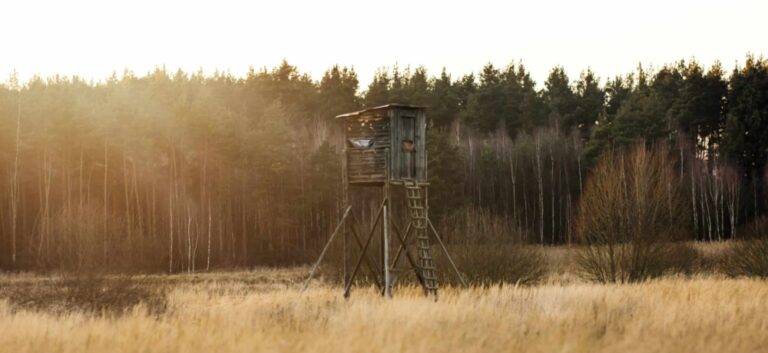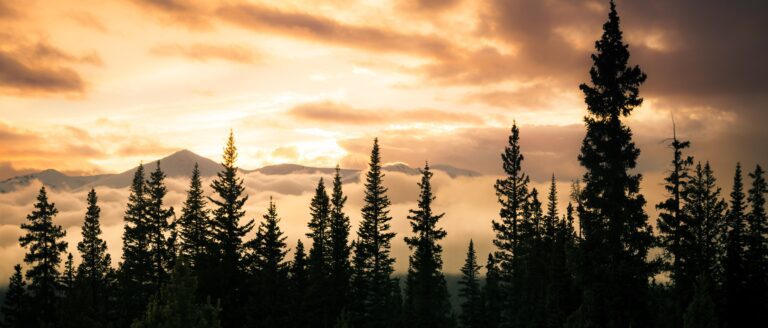The buck deer, scientifically known as Odocoileus spp., is a majestic and iconic creature that has captured the imagination of humans for centuries. These magnificent animals possess a truly captivating air of grace and strength.
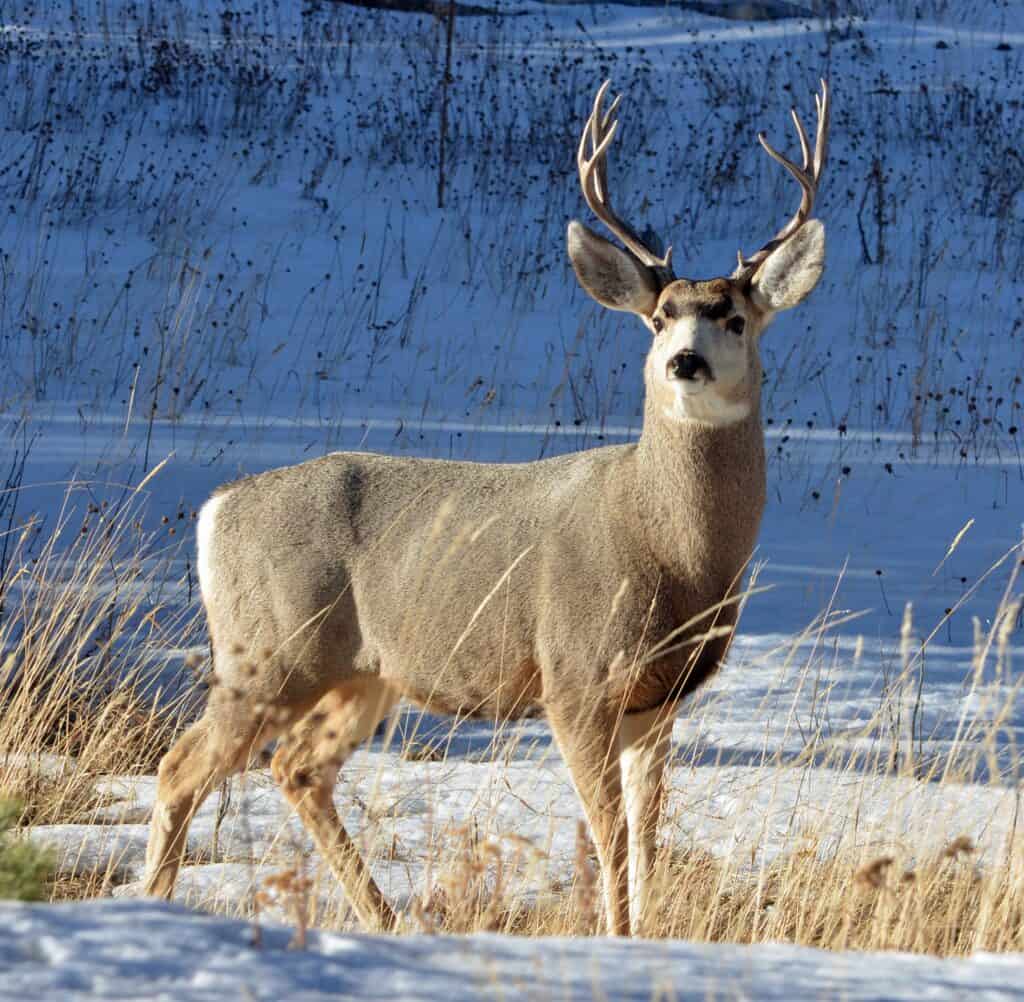
Characterized by their impressive antlers, unique to male deer, bucks are highly revered in various cultures worldwide. In this comprehensive article, we will explore the fascinating world of buck deer, delving into their physical characteristics, habitat and distribution, behavior and social structure, diet, feeding habits, reproduction and life cycle, threats to their population, and conservation efforts.
Definition of a Buck Deer
A buck deer is a male deer belonging to several species within the Cervidae family. Its antlers distinguish it. Antlers are bony outgrowths on the heads of male cervids (deer family), including bucks.
These antlers serve various purposes, such as attracting mates during the mating or rutting season (more on later) and establishing dominance among other males. It is important to note that not all male cervids have antlers throughout their lives.
Only members of the Cervinae subfamily (which includes species like white-tailed deer and mule deer) possess actual antlers that are shed annually. On the other hand, members of the Capreolinae subfamily (which includes moose and elk) have larger branching structures called “antler-like” structures or simply “antlers.” These structures do not shed annually but rather persist throughout their lives.
Importance and Symbolism of Buck Deer in Various Cultures
Buck deer have long held significant cultural importance in numerous societies worldwide. In many indigenous cultures across North America, these magnificent creatures symbolize strength, fertility, and masculinity.
They are often associated with hunting prowess and serve as a source of food, clothing, and tools for survival. Moreover, the buck deer’s antlers have been regarded as powerful symbols in folklore and mythology.
These antlers’ impressive size and intricate shapes have inspired courage, wisdom, and spiritual growth tales. In some Native American tribes, it was believed that those who encountered a buck deer would be blessed with good luck or granted special abilities.
The symbolism surrounding the buck deer extends beyond indigenous cultures. In Western societies, the image of a buck is often associated with masculinity and power.
Adorned on logos, emblems, or sports team mascots, buck deer represent qualities such as strength, agility, and resilience. Modern popular culture has ingrained this iconic symbol to represent nature’s magnificence.
Physical Characteristics
Size and Weight Variations among Different Buck Deer
Regarding size and weight, buck deer exhibit remarkable variations among different species. The largest species, the moose (Alces alces), can weigh up to 1,800 pounds (816 kilograms) and stand over six feet tall at the shoulder.
On the other end of the spectrum, smaller species, such as the pudu (Pudu pudu), weigh a mere 20-30 pounds (9-14 kilograms) and measure just about one foot in height. These disparities reflect diverse adaptations to specific ecological niches within their respective habitats.
Antlers: Growth, Shape, and Purpose
One of the most distinguishing features of male buck deer is their magnificent antlers. Antlers are bony outgrowths that are shed and regrown annually by most members of the deer family. The growth process begins in spring when new antler tissue called “velvet” starts developing at an astonishing rate due to high testosterone levels.
This period is vital for nourishing the antler’s rapid growth. The shape and complexity of antlers vary significantly among different species of buck deer.
Some have simple single-pointed spikes called “spikes,” while others have branching structures known as “bifurcations” or even more elaborate formations with multiple tines. Various factors, including genetics, age, diet quality, overall health, and hormonal balance, influence shape and size.
Annual Shedding and Regrowth Process
Every year before winter sets in, mature buck deer shed their antlers as part of a natural process known as “casting.” This shedding occurs once the mating season ends – usually between December and February – marking the beginning of a new growth cycle for fresh antlers in preparation for future mating seasons. The casting process involves reabsorbing calcium and other minerals from the antler, weakening the bone-to-antler connection until it eventually breaks. The erosion of a specialized tissue facilitates shedding called the “pedicle,” which is the point of attachment between antlers and the skull.
Once shed, bucks experience a period when their pedicles are sensitive and vulnerable, but this discomfort is temporary. Factors influencing antler size and complexity are multifaceted.
Genetics play a significant role in determining potential antler growth patterns; however, external factors such as nutrition, age, overall health status, and social hierarchy within a population can impact final antler size. These factors contribute to the diversity we observe in the magnificent antlers of different buck deer species.
Buck Deer Habitat and Distribution
Global distribution of buck deer species
The majestic buck deer can be found in various regions across the globe. While they are most commonly associated with North America, particularly the United States and Canada, several species of buck deer have established their presence throughout Europe, Asia, and even parts of Africa. In North America alone, notable species include:
- The White-tailed deer (Odocoileus virginianus).
- Mule deer (Odocoileus hemionus).
- Black-tailed deer (Odocoileus hemionus columbianus).
- In Europe, the Roe deer (Capreolus capreolus) is widely distributed, while the Sika deer (Cervus nippon) is home in Eastern Asia and parts of Europe. This global distribution reflects their adaptability to diverse habitats.
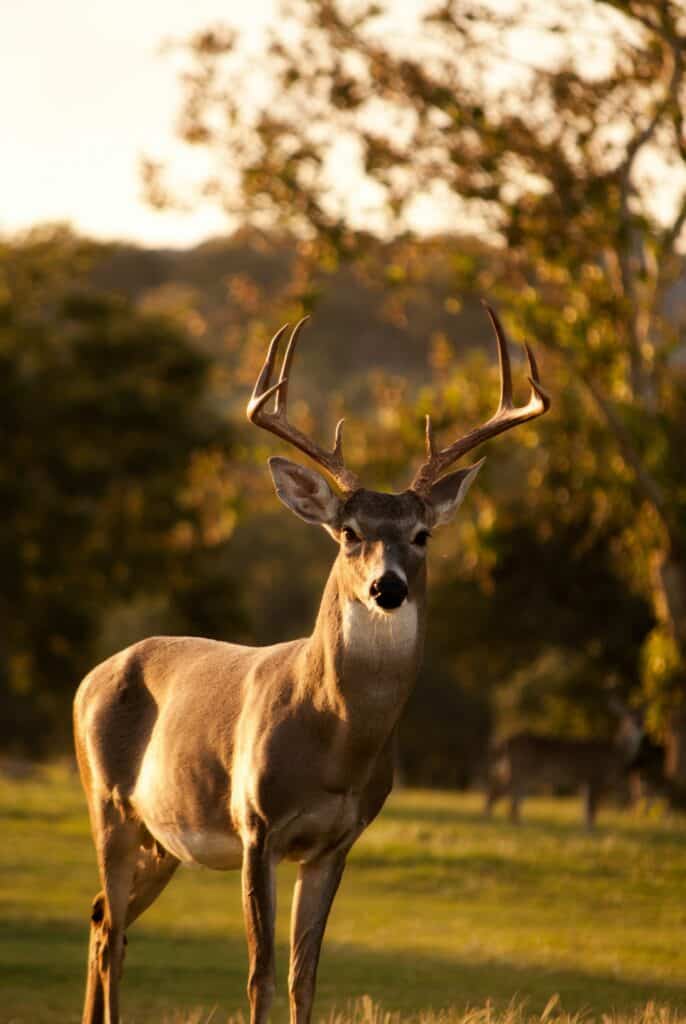
Preferred habitats: forests, grasslands, mountains
Buck deer exhibit impressive adaptability when it comes to their preferred habitats. At the same time, they can be found in various ecosystems, from dense forests to open grasslands and even rugged mountainous terrains. Forested areas provide these magnificent creatures ample cover from predators and access to browse various shrubs and undergrowth plants.
Interestingly, certain species like Mule deer have shown a particular affinity for arid or semi-arid regions where desert vegetation prevails. In contrast, grassland environments offer nutritious grasses that fulfill their dietary needs during different seasons.
They adeptly graze upon these lush pastures while keeping a vigilant eye for any signs of danger that may emerge from the surrounding open spaces. Additionally, mountainous terrain holds appeal for some buck deer species due to its abundant vegetation at higher altitudes.
Adaptations to different environments
Buck deer have developed remarkable adaptations that allow them to blend seamlessly into their respective environments, enhancing their chances of survival. Their fur coats boast a remarkable range of colors and patterns, effectively camouflaging them against the backdrop of forests, grasslands, and mountains.
For instance, the White-tailed deer exhibits a reddish-brown coat during summer months, transforming into a more grayish hue in winter to aid in concealment amidst snow-covered landscapes. Moreover, buck deer possess an extraordinary ability to remain motionless when they sense potential danger nearby.
This skill enables them to evade detection by predators who rely heavily on movement for hunting success. Alongside their physical camouflage capabilities, buck deer utilize natural cover, such as dense foliage or rocky outcrops, to shield themselves from prying eyes.
Buck Deer seasonal migration patterns
Seasonal migration is observed among certain buck deer species as they navigate changing environmental conditions and food availability. For instance, in regions where winters are harsh and food becomes scarce, such as North America and Europe, some species migrate extensively from higher elevations to lower valleys or coastal areas. These movements are often synchronized with specific seasons when food resources are abundant at different locations.
Furthermore, seasonal migration is not solely driven by food-related factors but is also influenced by breeding behaviors. During the rutting season (mating period), male deer may migrate towards areas where competition for mates is fierce or where receptive females gather in large numbers.
These migratory patterns highlight the remarkable instinctual nature of these majestic animals and their ability to navigate vast distances while adapting to varying climates along the way. The habitat preferences and distribution ranges of buck deer reveal their adaptability and resourcefulness across diverse environments worldwide.
From the dense forests of North America to the grasslands of Europe and Asia’s rugged mountains, these creatures have mastered survival strategies such as camouflage techniques and seasonal migrations. Understanding their habitat requirements and distribution patterns is crucial for conservation efforts and ensuring the continued flourishing of these magnificent species.

Behavior and Social Structure
Rutting Season: Mating Rituals and Competition among Bucks
During the rutting season, which typically occurs in autumn, buck deer engage in elaborate mating rituals to attract mates and establish dominance over rivals. This period is characterized by heightened testosterone levels, resulting in remarkable behavioral changes.
Bucks become more active, aggressive, and vocal as they compete for the attention of receptive females known as does. The intensity of their interactions during this time is fascinating to observe.
Vocalizations, Scent Marking, and Displays of Dominance
One captivating aspect of buck deer behavior during the rutting season is their extensive vocal repertoire. They produce a range of distinct calls to communicate with other males and attract females. These vocalizations can vary from deep grunts to high-pitched roars, each serving a specific purpose, such as asserting dominance or indicating interest in potential mates.
In addition to vocalizations, bucks employ scent marking as a means of communication. They have specialized scent glands on their foreheads and legs that release pheromones onto vegetation or objects within their territory.
By doing so, they leave behind olfactory messages that convey information about their presence, status, and readiness to breed. Furthermore, displays of dominance play a crucial role during the rutting season.
Bucks showcase their strength through various behaviors aimed at intimidating competitors. This can involve erecting the hair on their backs (known as piloerection), lowering their heads with antlers forward during confrontations (known as “head-down threat display”), or engaging in parallel walks alongside rivals while displaying size and aggression.
Aggressive Behavior During Fights for Mates
The competition for mates among bucks peaks during the rutting season when fights between rivals become inevitable. These battles are intense displays of physical aggression where bucks engage in head-butting contests to establish dominance and secure breeding rights. Their antlers, explicitly regrown for this purpose, act as formidable weapons that clash violently during these encounters.
The clashes can be so forceful that the sound of antlers colliding echoes through the surrounding landscape. These fights are not only about brute strength but also strategic maneuvering.
Bucks assess each other’s size, antler complexity, and body condition to determine their opponent’s fitness for mating. The victor gains mating opportunities with receptive does, while the defeated buck must retreat and find other ways to ensure reproductive success.
Elaborate mating rituals, vocalizations, scent marking, and aggressive battles for dominance characterize buck deer’s behavior and social structure during the rutting season. Understanding these fascinating aspects allows us to appreciate the remarkable adaptations and complex dynamics that shape their lives during this crucial reproduction period.
Buck Deer Diet and Feeding Habits
Herbivorous Nature: Preference for Plants, Leaves, Fruits, etc.
Buck deer, being herbivores, exhibit a strong preference for consuming various types of plants as their primary source of nutrition. They possess a complex digestive system that efficiently extracts nutrients from plant matter.
Their diet typically includes leaves, grasses, shrubs, fruits, and occasionally bark or twigs. The specific plant species consumed may vary depending on the geographic location and seasonal availability; in forested regions, buck deer may feed on train forested regions, tree leaves, and acorns while opting for grasses and fruits in open grasslands. A noteworthy aspect of their herbivorous nature is that buck deer are highly selective eaters.
They possess refined taste buds and can distinguish between different plants based on their nutritional content and digestibility. This selectivity ensures they consume a well-balanced diet while avoiding potentially toxic or indigestible vegetation.
Grazing vs. Browsing Behavior Depending on Habitat Availability
The feeding behavior of buck deer can be broadly categorized into grazing and browsing depending on the availability of their preferred food sources within their habitat. Grazing refers to the consumption of low-growing vegetation, such as grasses that grow close to the ground surface. In areas where these plants are abundant—such as open meadows or prairies—buck deer will often graze by nibbling the grass with their front teeth.
On the other hand, browsing involves consuming higher-growing vegetation, such as leaves from trees or shrubs. When grazing opportunities are limited or during certain seasons when preferred grasses become scarce (e.g., winter), buck deer adapt by browsing on available woody plants using their long necks to reach up into trees or shrubs for foliage.
Impact on Vegetation Growth and Ecosystem Balance
The feeding habits of buck deer play a crucial role in shaping vegetation growth and maintaining ecosystem balance. By consuming plant matter, they indirectly control plant populations and promote the growth of nutritious and palatable species. Through selective browsing, they can influence the composition and structure of plant communities within their habitat.
Moreover, buck deer act as important seed dispersers. As they feed on various plants, the seeds in their droppings get distributed across the landscape, aiding in plant regeneration and genetic diversity.
This process helps sustain healthy ecosystems by facilitating new growth and ensuring the long-term survival of plant species. However, excessive browsing pressure from an overabundance of buck deer can negatively affect vegetation.
If their population exceeds what the habitat can support, it may lead to overgrazing or browsing certain plants to the point where they cannot regenerate or survive. Hence, balancing buck deer populations and available food resources is crucial for preserving biodiversity and ecosystem health.
Mating Rituals during Rutting Season
Instinctual Dance of Desire: The Magnificent Rutting Rituals of Buck Deer
The rutting season, known as mating, is intense activity and competition among buck deer. As autumn paints the landscape with vibrant hues, these majestic creatures engage in elaborate displays to attract mates and establish dominance.
The air is filled with echoes of their vocalizations, and the earth trembles beneath their hooves as they partake in a captivating dance of desire. During this time, bucks emit deep, resonant calls known as “roars” or “bulges” to announce their presence and assert their dominance over rivals.
These calls can carry miles across the forest as an unmistakable declaration of masculinity. Additionally, bucks employ various physical displays to showcase their strength and attractiveness.
They engage in fierce battles with other males using their formidable antlers to lock horns in tests of power. These confrontations are not only a spectacle for observers but also serve as a means for bucks to establish hierarchies within the population.
The Miracle of Gestation in Female Deer
Following successful mating rituals during the rutting season, female deer, commonly referred to as does, embark on an awe-inspiring journey toward motherhood. Once impregnated by dominant bucks amidst nature’s grand theater of courtship, it does experience a gestation period that ranges from approximately 200 to 205 days. The timing is that births typically occur during spring or early summer when resources are abundant and weather conditions favor survival.
During gestation, does undergo remarkable physiological changes to support the development of their offspring. Their bodies meticulously nourish and protect growing fetuses while ensuring optimal conditions for birth.
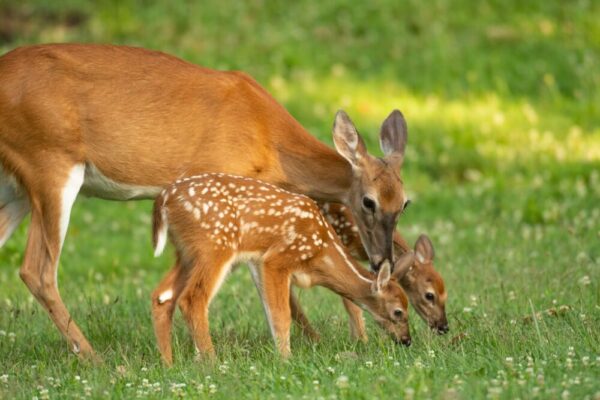
The Circle of Life: The Arrival of Fawns in the Season of Renewal
As nature awakens from its slumber, the arrival of fawns during the spring or early summer months marks a momentous occasion in the life cycle of buck deer. After a gestational period filled with anticipation, does retreat to secluded areas within their preferred habitats to give birth.
These hidden sanctuaries provide an added layer of protection against predators and disturbances. The birthing process is a delicate affair that often occurs under darkness.
Does meticulously prepare a soft bed using vegetation and leaves, ensuring a comfortable and secure environment for their newborns. With tender care, fawns debut into the world, covered in reddish-brown fur adorned with charming white spots meant to provide camouflage.
Once born, fawns are remarkably precocial, swiftly gaining strength and mobility under their mothers’ watchful eyes. While does leave their young for brief periods to forage, they diligently return to the nurse and groom them multiple times throughout the day.
This maternal care ensures essential nutrition and aids bonding while imparting crucial survival skills to future generations. Understanding buck deer’s intricacies of reproduction and life cycles provides insight into these remarkable creatures and fosters an appreciation for the awe-inspiring wonders of nature.
From mesmerizing mating rituals during rutting season to nurturing fawns through gestation and beyond, these processes exemplify nature’s exquisite balance between instinctual drive and maternal devotion. As we witness the circle of life unfolding among buck deer populations, let us cherish our role as stewards in preserving their habitat and ensuring their continued place within our natural world.
Threats to Buck Deer Population
Legal Hunting Seasons vs. Illegal Poaching
Subtitle: Striking a Balance between Conservation and Tradition Buck deer have long been an attractive target for hunters due to their majestic appearance and impressive antlers.
However, the delicate balance between hunting as a regulated activity and illegal poaching poses a significant threat to the buck deer population. Legal hunting seasons are established to manage wildlife populations and conserve their habitats.
These seasons are carefully planned by wildlife management agencies, taking into account factors such as population size, reproductive rates, and habitat conditions. By setting specific guidelines on bag limits, hunting licenses, and designated areas, legal hunting helps maintain sustainable populations of buck deer.
On the other hand, illegal poaching disregards these regulations, often driven by profit motives or disregard for wildlife conservation efforts. Such unlawful practices can severely impact buck deer populations by disrupting breeding cycles and causing imbalances in sex ratios.
Environmental Factors Affecting Buck Deer Population
Habitat Loss due to Deforestation or Urbanization
Vanishing Landscapes
Buck Deer’s Shrinking Homes One of the most pressing threats buck deer faces is habitat loss caused by deforestation or urbanization.
As human activities expand into wild areas, forests are cleared for agriculture, infrastructure development, or residential expansion. This encroachment disrupts the natural habitats of buck deer. Their population becomes vulnerable to decline for their survival.
With reduced access to food, it becomes vulnerable to decline. Fragmentation of habitat further exacerbates this issue as it isolates various groups of buck deer from one another, limiting genetic diversity and hindering migration patterns.
Climate Change Effects on the Buck Deer
Climate change significantly threatens the buck deer by altering food availability and foraging patterns. Rising temperatures, changing precipitation patterns, and extreme weather events can influence the growth of plants that deer depend upon for sustenance.
For instance, prolonged droughts can lead to reduced vegetation and limited water sources, making it harder for buck deer to find adequate nutrition. Additionally, changes in plant phenology due to shifting seasons can disrupt the timing of when key food sources are available.
As a result, buck deer may struggle to adapt their feeding habits accordingly, leading to malnutrition and weakened individuals. The buck deer population faces various threats that jeopardize their long-term survival.
Balancing legal hunting practices with conservation efforts is crucial in maintaining sustainable populations of these majestic creatures. Simultaneously, addressing habitat loss due to deforestation or urbanization is essential to preserve their natural habitats and prevent population decline.
Furthermore, recognizing the impacts of climate change on food availability is vital in developing strategies that support the dietary needs of buck deer amid changing environmental conditions. By addressing these threats collectively through education, regulation enforcement, habitat preservation initiatives, and climate change mitigation efforts, we can work towards ensuring a brighter future for buck deer populations across the globe.
Buck Deer Conservation Efforts
Preserving the populations of buck deer has become a crucial concern for wildlife conservationists and organizations worldwide. Efforts are being made to balance sustainable hunting practices and protection against illegal poaching. Many countries have implemented regulated hunting seasons, where the number of bucks that can be harvested is carefully monitored.
This diligence ensures that deer populations can replenish themselves naturally without being overexploited. Additionally, strict penalties and law enforcement measures are implemented to combat poaching, as it poses a significant threat to buck deer populations.
Habitat Restoration and Protection
One of the critical factors in preserving buck deer populations is ensuring the preservation and restoration of their natural habitats. Deforestation, urbanization, and climate change have significantly impacted these habitats, leading to habitat loss for these majestic creatures.
To address this issue, conservationists work towards conserving forested areas, creating protected zones or national parks where hunting is strictly prohibited. Replanting trees and implementing sustainable forestry practices also help restore the natural ecosystems essential for the survival of buck deer.
Public Awareness and Education
Raising public awareness about conserving buck deer populations is vital for long-term survival. Educational programs are conducted at community centers and through various media outlets to inform people about the ecological side of these animals and promote responsible behavior towards wildlife.
Public support is garnered through campaigns advocating responsible hunting practices or encouraging individuals to report any instances of illegal poaching. By fostering a sense of stewardship among communities, people become more inclined to protect buck deer and their entire ecosystem.
Conclusion
Efforts to conserve buck deer populations are essential in maintaining healthy ecosystems worldwide. Significant strides are being made to protect these majestic creatures through regulated hunting practices, habitat preservation initiatives, and public awareness campaigns. Conservation efforts strive to strike a balance between human activities and preserving biodiversity.
By valuing the importance of buck deer, we ensure their survival and contribute to the overall health and balance of our natural world. With continued dedication and collaboration, there is hope that future generations will have the opportunity to witness the beauty and grace of buck deer in their natural habitats.

